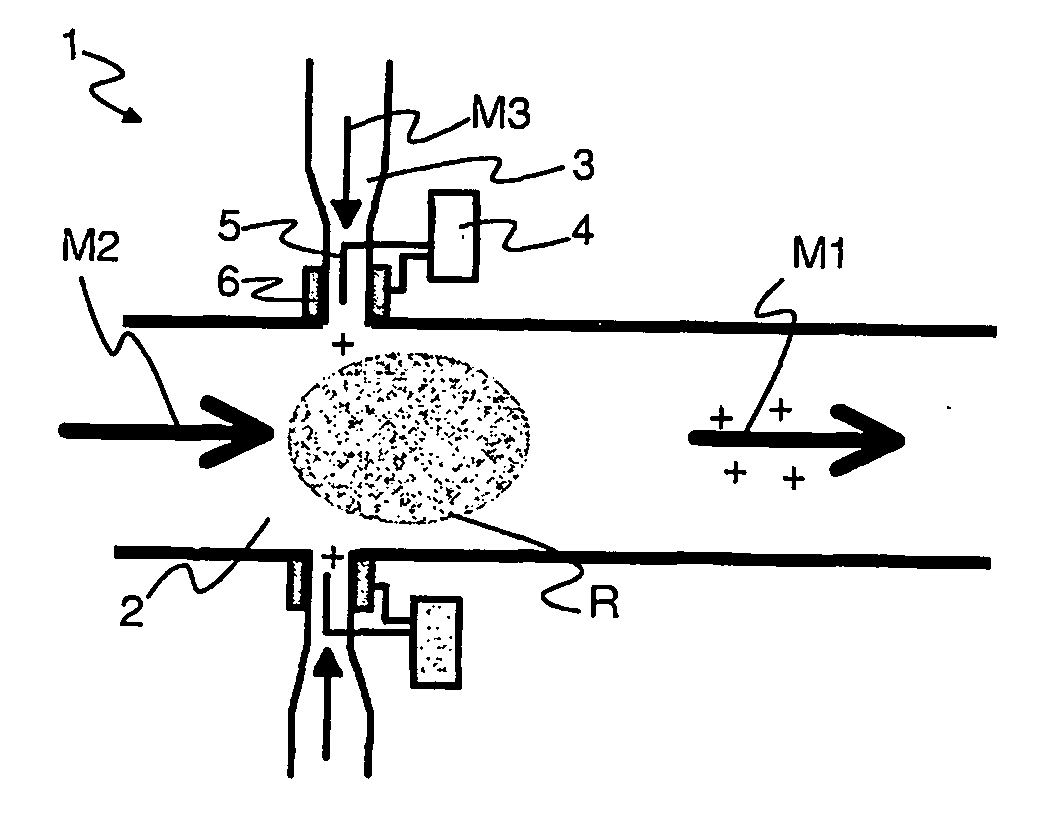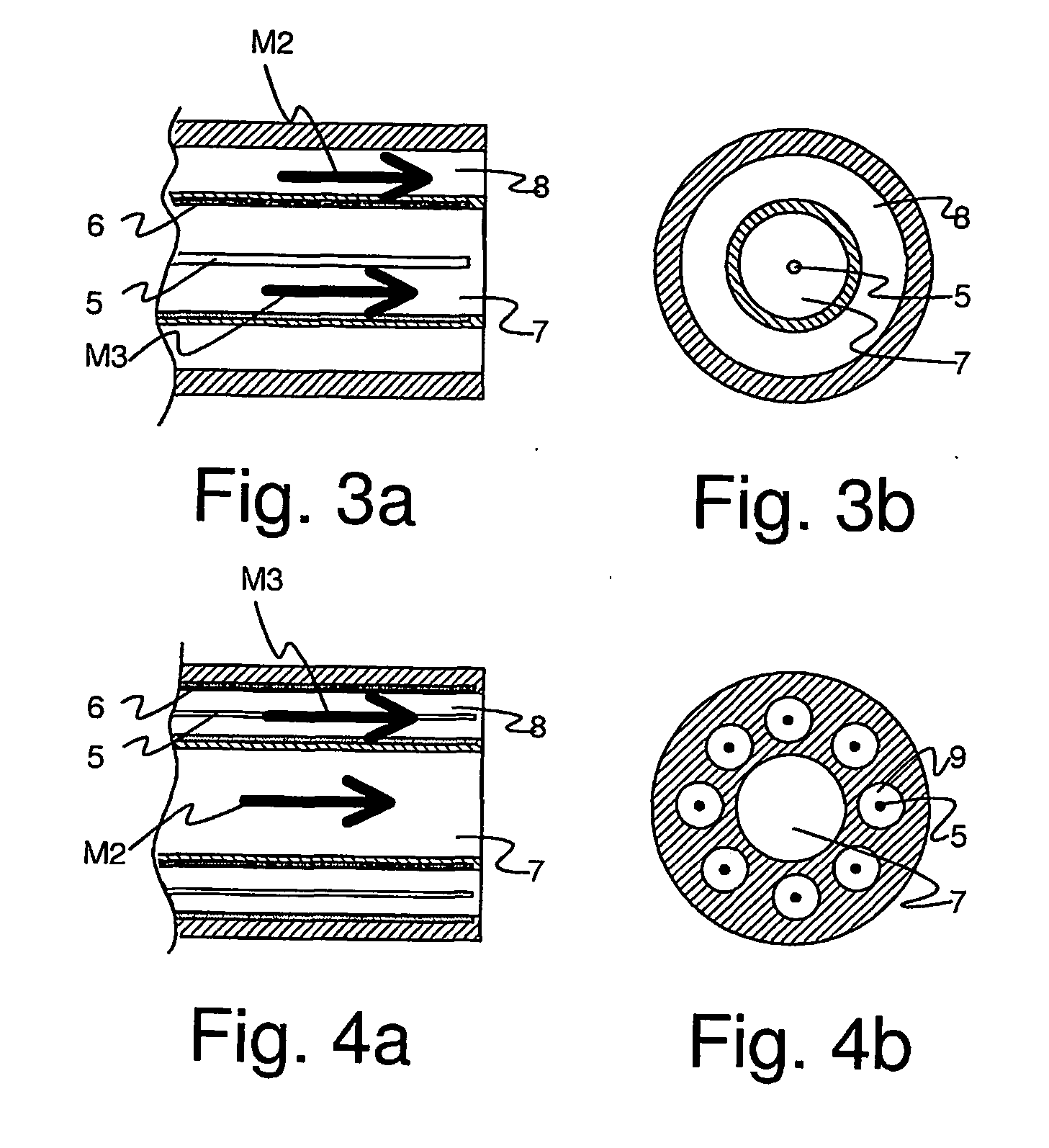Method for charging particles in a material manufacturing process
a technology of material manufacturing and charging particles, which is applied in the direction of glass making apparatus, manufacturing tools, glass deposition burners, etc., can solve the problems of uneven distribution of charge in the particles, difficult sintering process, and poor output of charged particles
- Summary
- Abstract
- Description
- Claims
- Application Information
AI Technical Summary
Benefits of technology
Problems solved by technology
Method used
Image
Examples
Embodiment Construction
[0025] According to the invention, the electrical charge is introduced in the particle formation with the gas reacting with the reactant at that stage of the process in which the reactant is oxidized and the particles are formed. Advantageously the electrical charge is introduced in the process with oxidizing gas that reacts with the reactant, such as oxygen, air or carbon dioxide. The charge that can be either positive or negative is produced in the gas by means of a suitable charging method and device, which is preferably a corona charger, by means of which an even and efficient charge output is attained in the gas flow.
[0026]FIG. 1 shows, in principle, the formation of electrically charged particles M1 in accordance with the invention. In the example, particles M1 are formed of silicon tetrachloride M2 (SiCl4) and oxygen M3 (O2) in gaseous form, of which for example particles containing silicon oxide (SiO2) are formed. Typically several components are used in the process, wherei...
PUM
| Property | Measurement | Unit |
|---|---|---|
| Speed | aaaaa | aaaaa |
| Flow rate | aaaaa | aaaaa |
| Speed | aaaaa | aaaaa |
Abstract
Description
Claims
Application Information
 Login to View More
Login to View More - R&D
- Intellectual Property
- Life Sciences
- Materials
- Tech Scout
- Unparalleled Data Quality
- Higher Quality Content
- 60% Fewer Hallucinations
Browse by: Latest US Patents, China's latest patents, Technical Efficacy Thesaurus, Application Domain, Technology Topic, Popular Technical Reports.
© 2025 PatSnap. All rights reserved.Legal|Privacy policy|Modern Slavery Act Transparency Statement|Sitemap|About US| Contact US: help@patsnap.com



